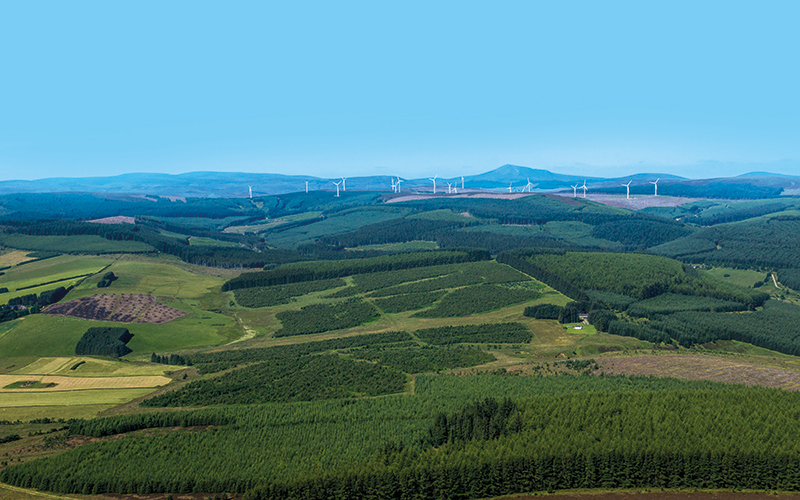Repowering onshore wind
Upgrading ageing UK onshore wind farms is a highly cost-effective way to secure a cheap low carbon power boost, writes Richard Vale at the EIC

The UK onshore wind market is one of related contradictions. The technology is widely regarded as one of the cheapest forms of new power generation (some estimates range between £40 and £45/MWh), but there are concerns over whether future projects can be economically viable without subsidies. The UK government has closed the Renewables Obligation, seen by many as crucial in the market’s development, yet financial support for onshore wind farms (excepting remote islands such as the Hebrides) is not available under contracts for difference auctions. And while there was a record 2.6GW installed in 2017, predictions suggest that only 1GW will be added by the end of this year.
Though it is easy to paint a bleak picture for the future of the sector, there is hope that the market can recover, endure and even thrive. In this revival, repowering projects or the upgrade of wind farms that have reached the end of their scheduled operation is expected to play a significant role.
Making the case
Repowering offers a spectrum of wind power development: it can, and often does, involve the complete dismantling and replacement of turbine equipment (including the tower and foundation), but equally it may involve simply installing a new drivetrain and rotor and replacing peripheral components.
In the next five years, an estimated 750 turbines will come to the end of their initial lifespan (20–25 years), and the Energy and Climate Intelligence Unit argues that repowering these sites could increase the UK’s generating capacity by more than 1.3GW.
Existing infrastructure, such as network connections and cables, can be reused or upgraded at costs lower than for new sites, and advancements in technology mean that newer turbines are more powerful and efficient. A 10-turbine farm comprising 500kW units can be replaced by five turbines of 2.4MW and the output will still more than double from 5MW to 12MW.
Technological and design improvements in new turbine designs have led to an enhanced generation of turbines. Studies into the reduction in performance associated with ageing equipment have shown that turbines lose 1.6% of their output per year, with average load factors declining from 28.5% when new to 21% after 19 years. Repowering means less unplanned downtime, lower operation and maintenance costs and higher guaranteed revenues for developers.
Recent rule changes published by the government suggest that repowering projects may provide a solution to the onshore wind ‘ban’. A revised National Planning Policy Framework states that local authorities should now approve planning applications to repower existing wind turbines ‘if its impacts are (or can be made) acceptable’. This revised wording could allow a smoother application process for repowering projects since they will naturally be located at a site that is already deemed suitable for renewable energy developments.
Not only are these sites suitable, they often have some of the best wind resources in the country. Using EIC analysis, Figure 1 shows all wind farms (over 5MW) which began operating in 2003 or earlier. These developments are almost exclusively located on the west coast at sites where full load hours, which can be used as a measure of wind availability, can reach more than 3,000 annually – nearly double that of some more inland locations.
Keeping the turbines turning
While they are not a silver bullet for the UK onshore wind industry, repowering projects look set to provide significant opportunities for developers, original equipment manufacturers and independent service providers, as well as the associated supply chain. The combination of strong wind resources and reuse of existing infrastructure will enable development without the need to rely on government subsidies, and could provide a pathway to developing a truly subsidy-free onshore wind market. A fitting symmetry: the repowering of the forerunners of the renewable energy industry could act as a catalyst for the transition to the market’s next paradigm.
By Richard Vale, Energy Analyst – Power, Nuclear, Renewables, EIC






Follow us
Advertise
Free e-Newsletter